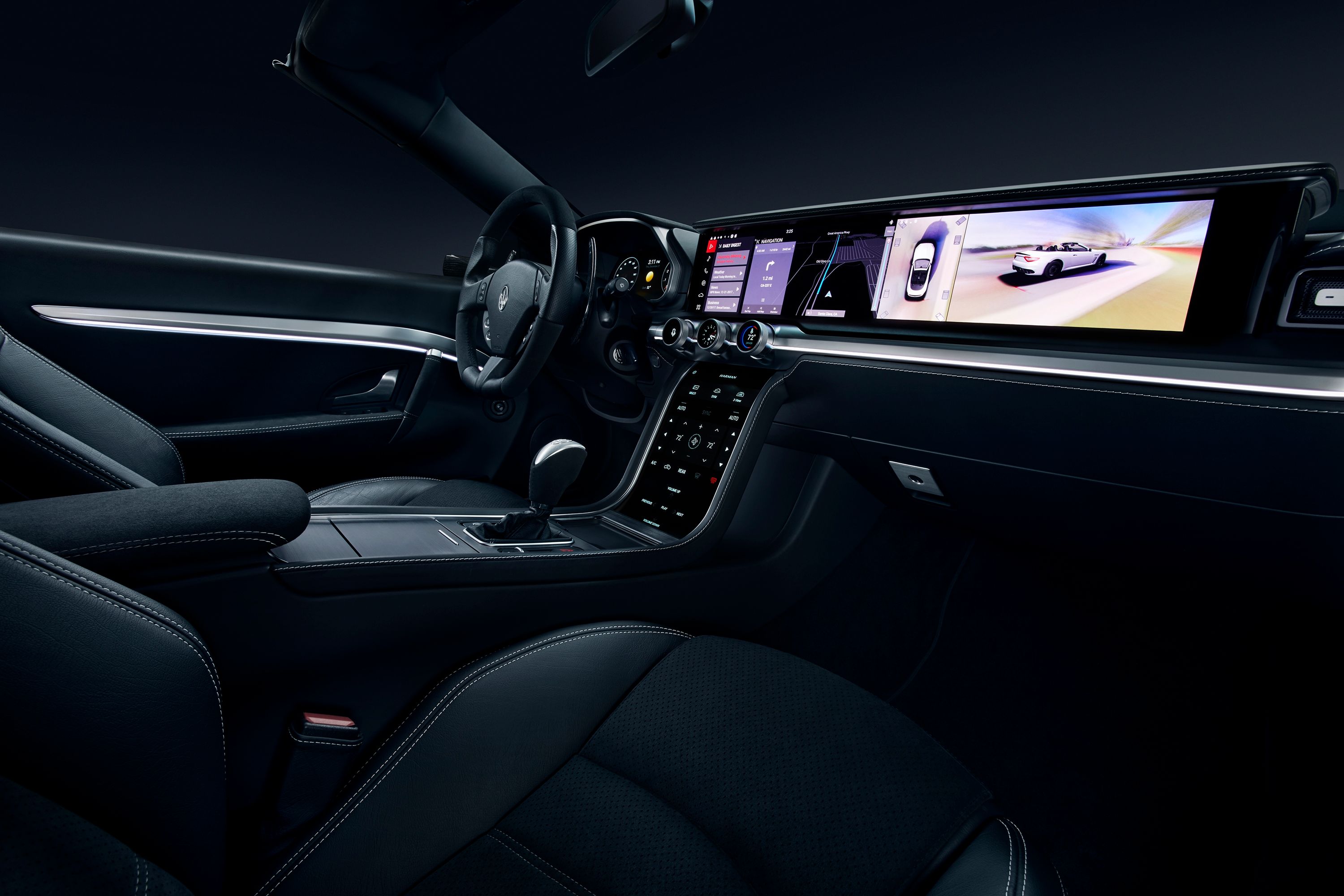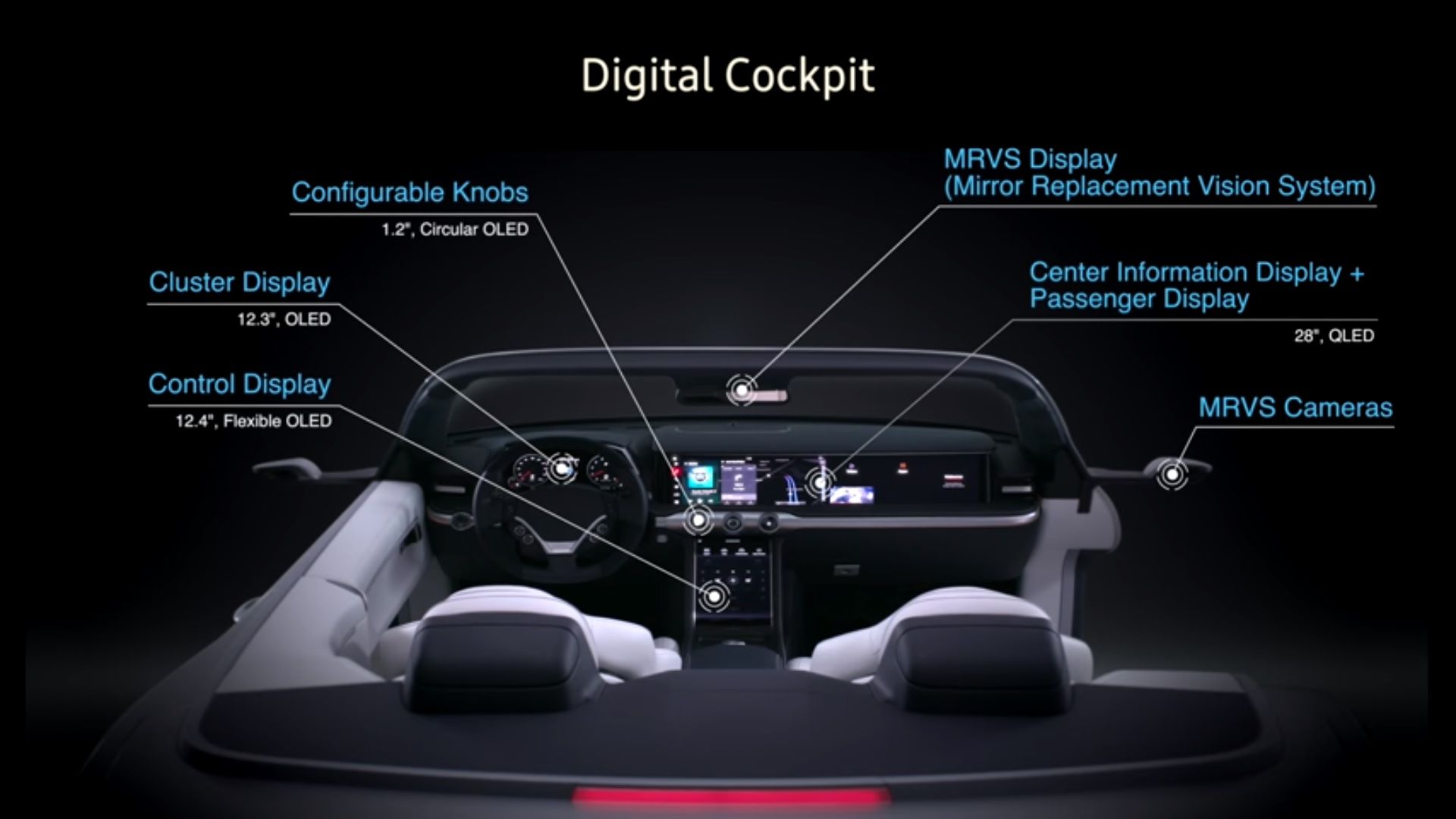Samsung’s $8 billion purchase of Harman International has finally borne fruit. The Korean tech giant showcased the results of its harvest when it unveiled its first set of components for autonomous driving and infotainment solutions that it developed with Harman. The CES showcase includes a new digital cockpit platform and a suite of state-of-the-art technological tech features geared towards enhancing autonomous driving.
If Samsung wanted to make a statement in the auto industry that it’s open for business, the products it unveiled at CES are good ways to do it. The Korean tech firm developed some interesting products, one of which is characterized as much by its size as the array of functions it offers.
Digital Cockpit Platform
It’s safe to say that the company’s digital cockpit platform is huge. It covers a good length of a car’s dashboard that’s similar to the display unit that Chinese electric car startup Byton unveiled in its own concept vehicle. Dimensions aside, Samsung’s digital cockpit platform it’s a showcase piece unlike any other. It comes with a vast number of features that are all geared towards supporting the industry’s pursuit of future tech mobility. On the surface, it functions just like any digital display. But there’s more to the platform that just surface-level gadgetry. Samsung says that platform is also available in two different settings — standard and advanced. The two configurations differ in certain aspects, but they do share the same ability to support the industry’s pursuit of connected mobility.
That said, the “advanced” setting is labeled as such for a reason. For instance, this setting allows drivers and passengers to personalize the platform through its ability to take in user profiles from mobile devices and the cloud. This allows drivers and passengers to integrate the functions of their mobile devices into the digital cockpit and take advantage of the services it provides, including virtual personal assistants, portable profiles, and augmented reality, among others. Imagine integrating your Android OS device into the platform and seeing them come to life on four displays in front of you. That’s never been done in the industry before.
From an aesthetic standpoint, Samsung says that the digital cockpit platform is completely scalable. That means that it can be fitted into the interior of a large number of cars with different body types.
DRVLINE Platform
As fun as the Digital Cockpit Platform looks and sounds, it can be argued that Samsung will only get serious headway in this segment if it dives deep into autonomous driving technology. The Korean tech giant knows this, which is why it’s also showcasing its new DRVLINE Platform.
The modular platform is geared towards autonomous driving, specifically scaled from Level 3 automation all the way up to Level 4 and Level 5. For those who aren’t familiar with the nomenclature, Level 5 autonomy basically means the driver hands complete control to the car. This is the space that Samsung is targeting with its new platform. One of the first products to come out of this pursuit is a forward-facing automotive camera system that comes with its own array of sensory and tech capabilities, including collision warning, lane-departure warning, and adaptive cruise control.
The new camera system is a perfect example of the mutualistic relationship between Samsung and Harman International. Not only does it leverage Samsung’s unquestioned expertise in camera technology, but it also takes advantage of Harman’s own ADAS 360 solution, a software system that blends machine learning and data science with augmented reality.
Better yet, the camera system is actually a real thing now. Samsung indicated that the product will be ready to ship sometime this year.
References
Read more CES news.
Read more technology news.


